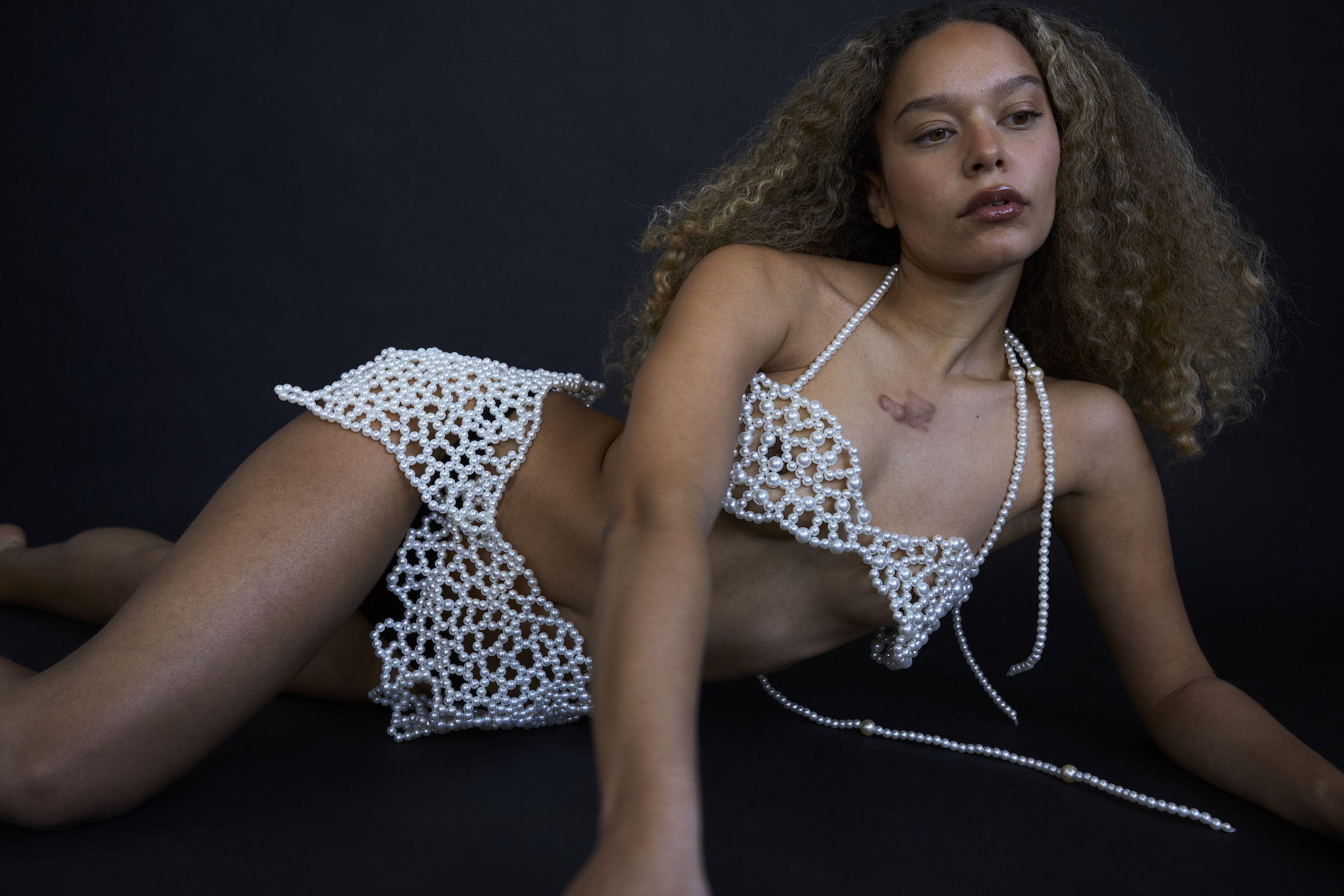
Founded by Taylor-Bea Gordon, T LABEL is the London-based fashion brand bringing ‘romantic wear’ to the forefront. Described as a “three-dimensional connection between clothing, nostalgia and one’s self”, Gordon is set on building her own path within the industry. Having worked at iconic fashion houses such as Alexander McQueen, Erdem, and Acne Studios, her once “late-night side project” has become her full-time business. After seeing her work on the likes of Adut Akech, Lizzo and Marion Cotillard, we wanted to meet the woman behind the magic and step into her world.
Shall we begin at the beginning of T LABEL? Can you talk me through the brand’s formation?
Since my college days, I knew that I wanted to do this. When I handed my fashion and textile project in at college, I had these little ‘T LABEL’ stickers on the hangers. And from quite early on, I have been obsessed with creating my own brand. After going through university, interning and working at fashion houses including Acne Studios, Alexander McQueen and Erdem, I gathered as much information and skills as I could to apply to my own brand one day. Many people I knew from working at these places felt that there weren’t enough job opportunities to move around in the industry. Getting promotions was hard. It felt like a long journey ahead to work my way up at any fashion house. Just before the pandemic, I moved outside of London, where rent is cheaper, to start T LABEL.
What is the motivation behind T LABEL? The beginning inspiration…
In a world where so many people own so much ‘stuff’ and fast fashion has accelerated, I wanted a brand that reminds people to invest in products they love. Whilst still wearable, they are special pieces that memories are made in. We call our style of clothing ‘romantic wear’. It was important to me that T LABEL had its own self-made genre. It is about passion and finding passion in clothes, not just buying something because it’s a bargain but because you really really want it.
I love this idea of creating your own genre, what does the phrase ‘romantic wear’ mean to you?
The easiest way to describe what romantic wear is and means is a three-dimensional connection between clothing, nostalgia and one’s self. For us, it’s not about just buying clothes and putting them on your body, but adding that element of nostalgia, where you create memories, and you have the conversation around your clothes. It’s about finding that emotional connection with clothes again that I believe has got a little lost through the rise of technology.
… And how have you seen this develop over the years? Is the objective or identity of the brand still the same?
Romantic wear still remains our ethos. We question the customers’ relationship with clothes in everything we make. Alongside this, our priority is Earth. Our mission is to create a world where fashion can exist without contributing so much to climate change. Its been at the heart of the brand since the beginning and still remains our first priority.
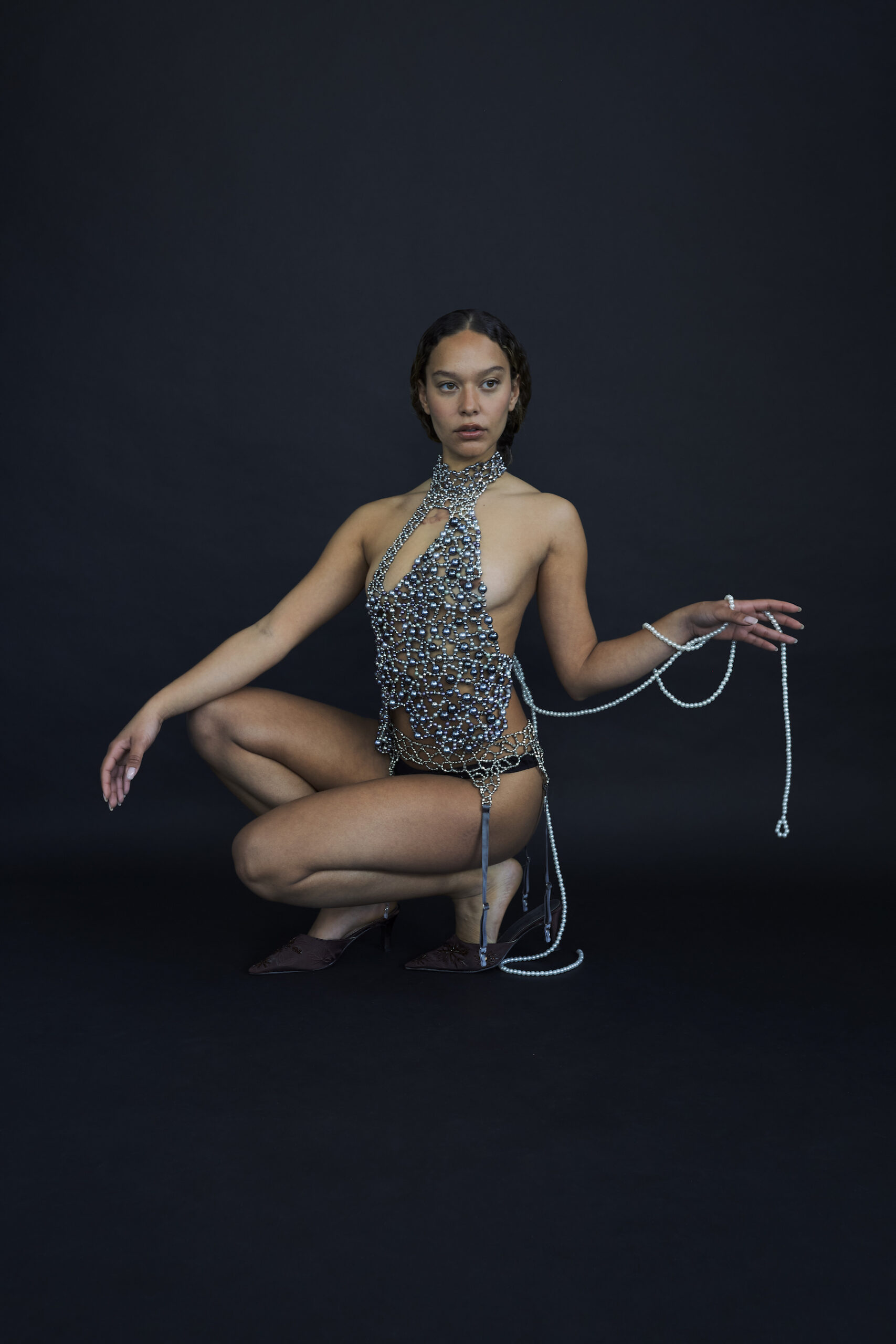
The new campaign is stunning. Can you delve into this enchanting direction shot by Beatriz Puppo Amo?
I’ve worked with Bea a few times for photoshoots now and with the model Isabella. I started T LABEL during the pandemic from home, taking pictures of the products on different parts of my body because of course, due to isolation, we couldn’t see anybody else. When lockdown regulations were lifted, the brand had grown more and some of our campaigns and lookbooks that we shot had a lot more people involved; make-up artists, hair, set design etc. For this campaign, I wanted to create something really intimate that only had a photographer, model and art director/stylist. It was to go back to the DIY roots of the brand and how it started through the lockdown. Moodboards had an open brief of the 1920s, exploring a more witchy and dancer side to the era. It left a lot of freedom and room for experimentation on set. We styled it in a very nude way. It was important to me that we had a really safe environment on set. Three women who have worked together before, explore the intimacy of being a woman through the era of the 1920s.
The Great Gatsby’s 1920s and spell-casting noir femme fatales are certainly evoked. How does this infusion of allure seen in the campaign manifest within the collection’s aesthetic?
It really felt natural to explore this spell-casting 20s route for this campaign. The collection itself is so intricate and the pieces move in such an unusual way. When you wear the beads, they really feel like they are made with love and are unique in their own way. Magical. Looking at images of how dancers and performers posed for pictures in the 20s felt perfect for this collection because the clothes themselves naturally make you hold yourself in that way.
Femininity takes on a revamped identity through the brand, celebrating the body and its sensuality. Could you shed light on how you wish to represent femininity?
I aspire for the brand to become a safe place where people can explore their sensuality. In the case of this campaign, it was working with an all-female team, women exploring their femininity. It still seems as though there is a lot of shame in women exploring their sensuality compared to men now. Sensuality to me is natural for so many people and it’s not something that should be frowned on. Finding a delicacy but such confidence at the same time with sensuality is something I aim to explore through the brand in many different ways. On set, there is no pressure or nothing out of anyone’s comfort zone. Creating a safe place is important in representing femininity. I was speaking to Isabella on set of this campaign and we both felt that choice was important to us. Women have a choice to show their bodies or not show their bodies without feeling the shame of doing either.
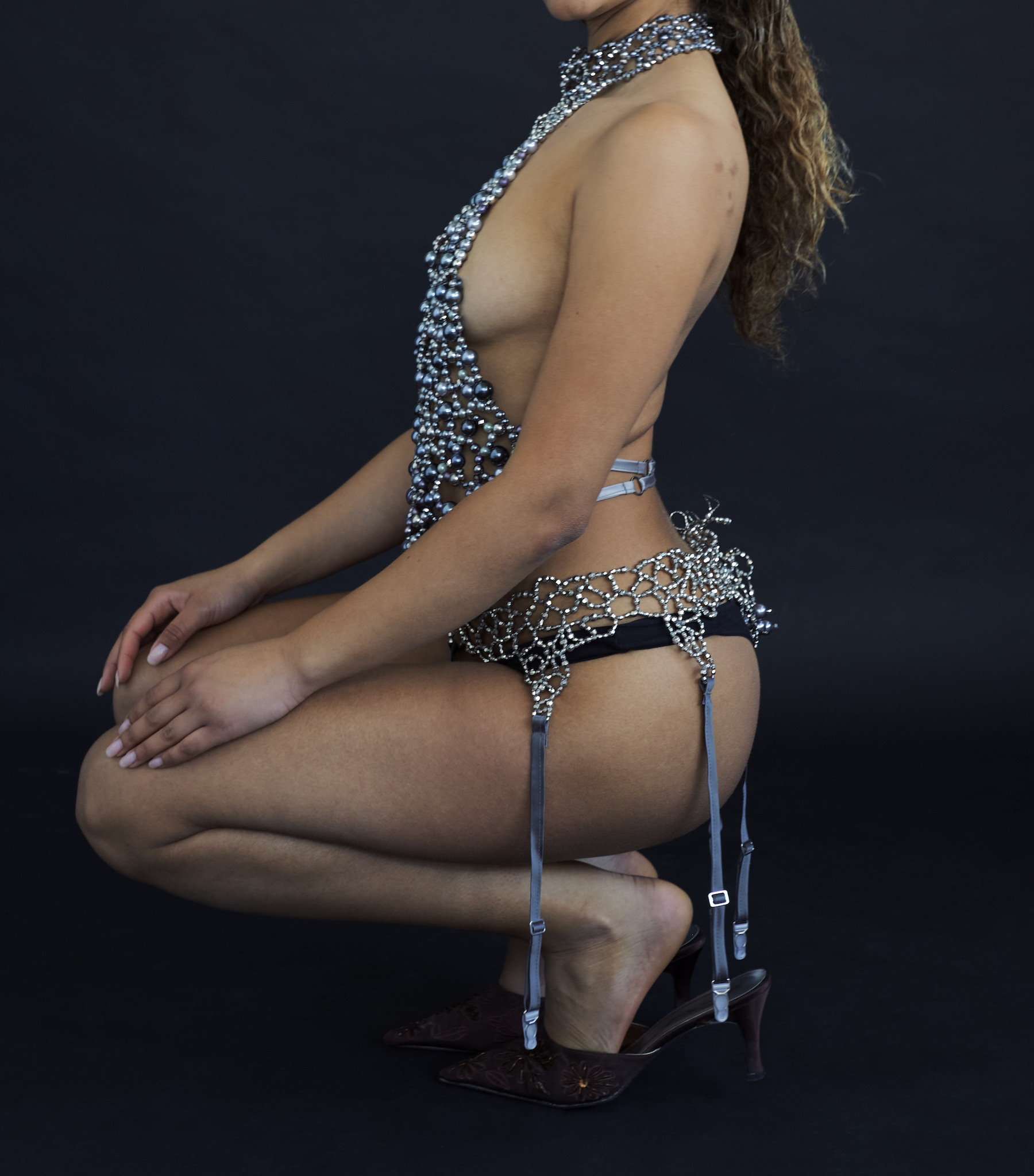
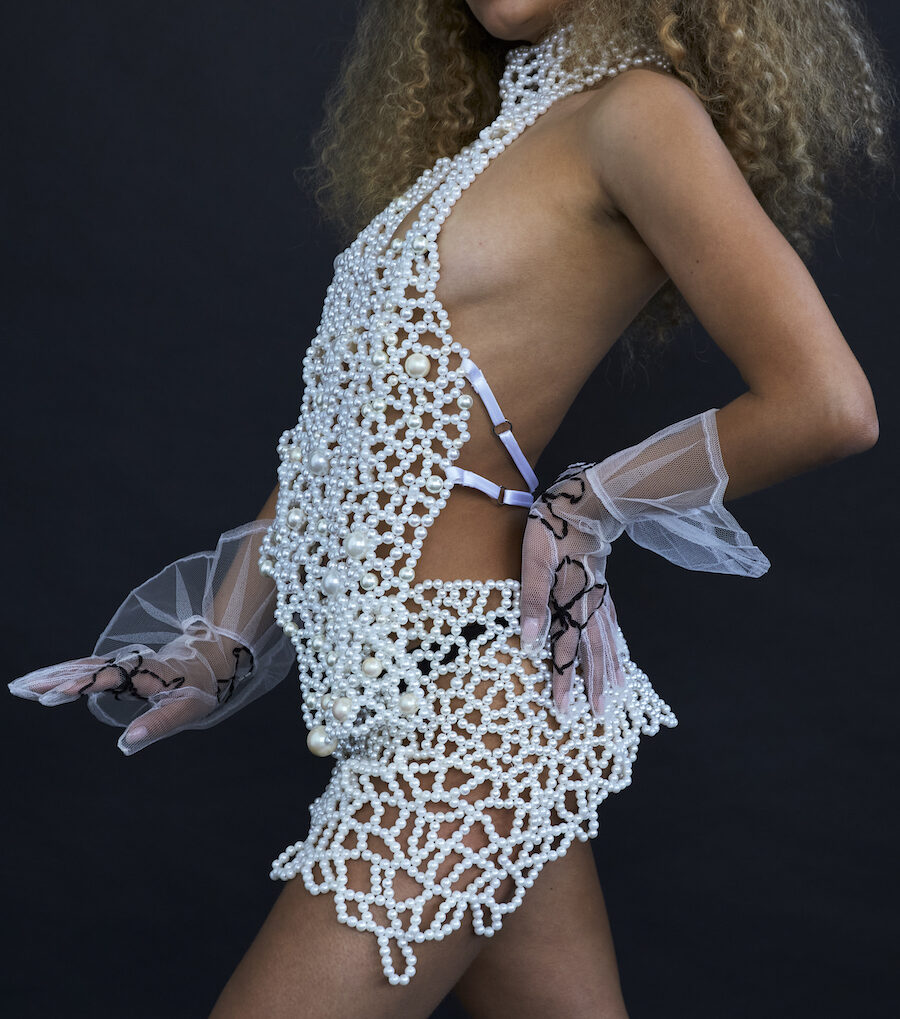
The beads in the garments are meticulously designed. Could you delve into this weaving process and how this practice came about for you?
I learned a lot about embroidery through my work experience at Acne and McQueen. When I went back to uni to do my final collection, I thought a lot about the skills I learned working with beads and started to re-explore and develop techniques as I started T LABEL as it was something I missed doing. When you have a fashion brand or in a lot of cases, business at all, you do end up working all the time. Whilst I would sew at my machine and work in the studio all day, I would experiment with different beading patches whilst ‘relaxing’ in the evening with a good Netflix sesh. Then, I would develop these beading samples in the studio on the mannequin and become really obsessed with the weaving process and how it looked around the human form. All the beads we use are entirely upcycled from preloved garments. All beaded pieces are made-to-order, so sustainably it ticked a LOT of boxes. We explore a lot of intricate textile manipulation at T LABEL and the delicacy, yet transparency of the beaded pieces fits perfectly with other design elements that the brand is known for.
This attention to detail is similarly reflected in all of your designs, could you talk me through your design process, from conception to creation, to putting it out into the world?
Fabrics often come first in the design process for us, which is very unusual from researching a concept, to designing and then fabric sourcing. We don’t have the freedom to always work in this traditional way as deadstock, upcycled fabrics are often so limiting, which is good and the whole point of working with these instead of mass-produced fabrics. However, this does give us obstacles which we are happy to work around if it means we can work with existing fabrics and materials rather than adding stress to making constant new fabrications. We often have a theme, an era or a concept that we want to explore. At the same time, I’m sourcing fabrics that could then work with that idea. Once some interesting fabrics have been found, then we start to research the concept more in-depth mre and figure out how we can use the fabrics. We have to make that link, that connection.
Who is someone you are inspired by?
Creative Direction is really important to me. I really overthink every aspect of how the brand is presented, from Instagram tiles to our e-store, now to Threads. I really want the brand to have an identity across all platforms, branding, packaging and clothes itself and for it to all feel connected cohesively. Solange has always been a big inspiration to me. I love how she and her team have created a whole world around her music. From the designers they work with, to the movement and use of dance and choreography in her music videos. There is a certain consistency to when she works on something, it fits in with her world of aesthetics.
And what is something you would like to see changed in the industry?
I think a lot of smaller brands are really trying their best to produce sustainably. When you’re a smaller brand, it can be easier too because you also only have the budget and visibility to produce smaller quantities. For me, the main changes I want to see in the industry are the bigger fashion houses and the urgency for them to produce more sustainability. It’s not enough for these high-street brands to be working with say 10-20% recycled materials in their products. Their deadlines to be carbon neutral are constantly being pushed back. The only way these bigger companies will make sustainable production their priority is if it comes from governments and strict requirements and regulations are set. I hope politically these will come in place sooner not only for the fashion industries but all industries where products are being produced.
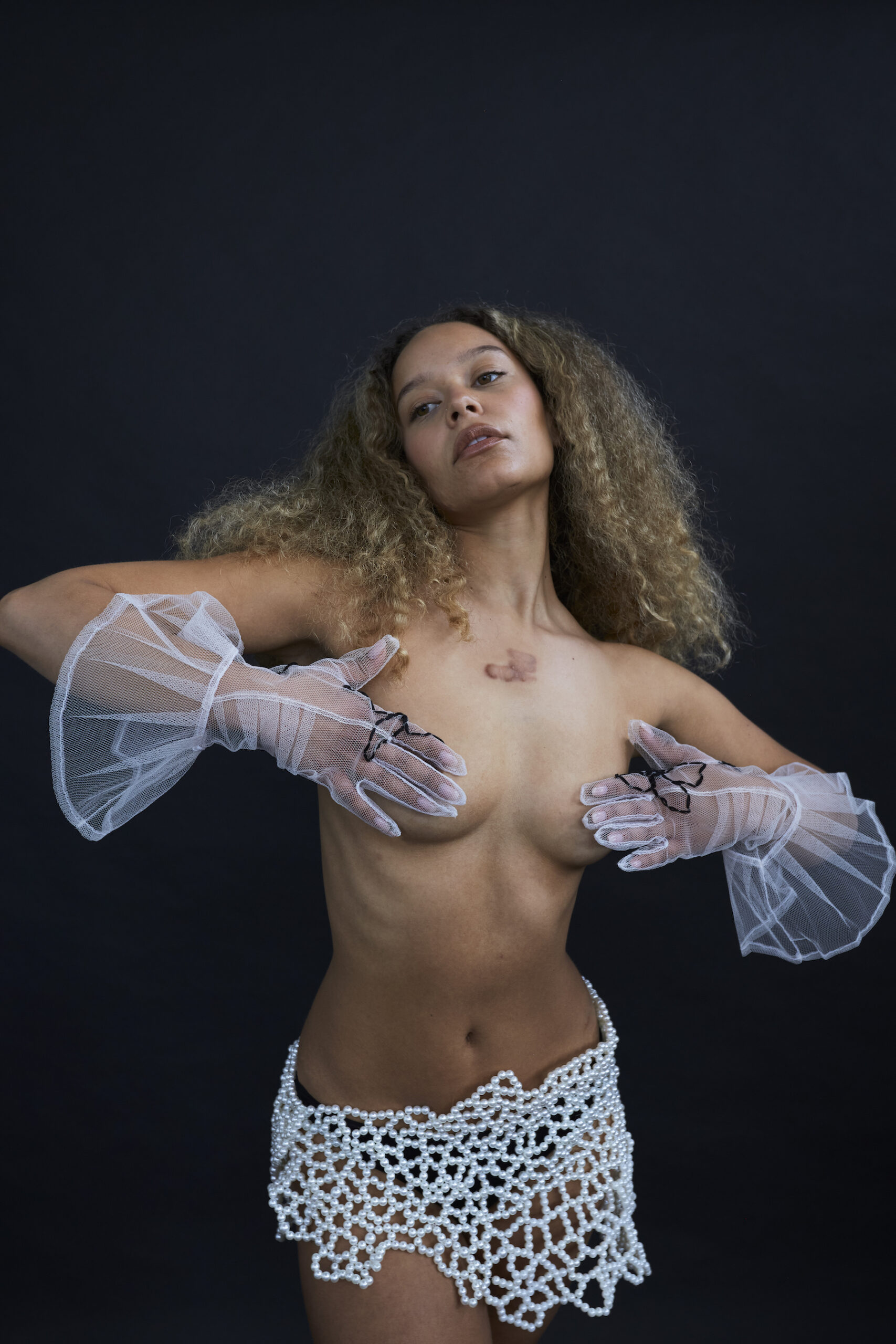
Words by Grace Powell
Images courtesy of T LABEL
You can shop the collection here!